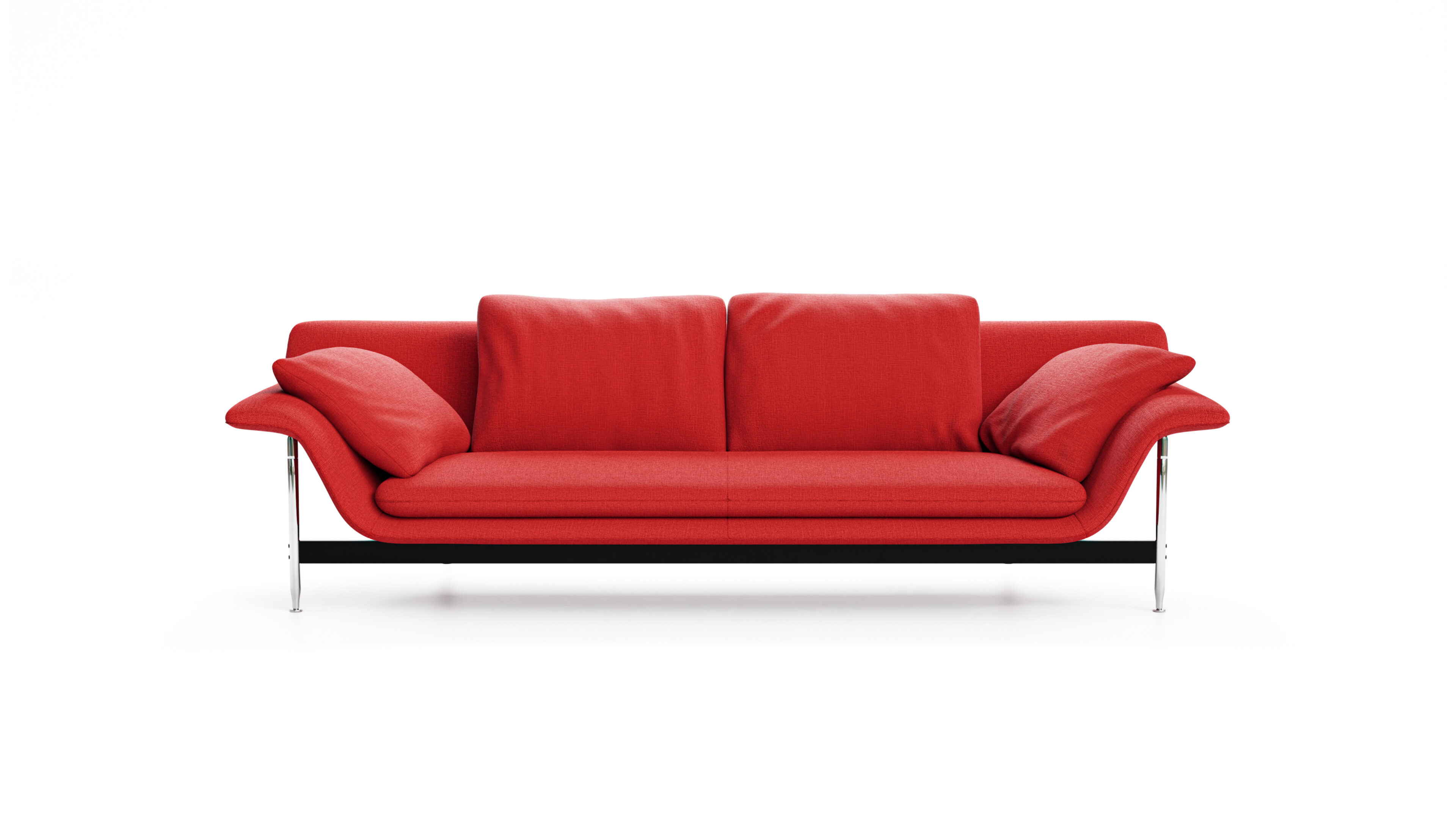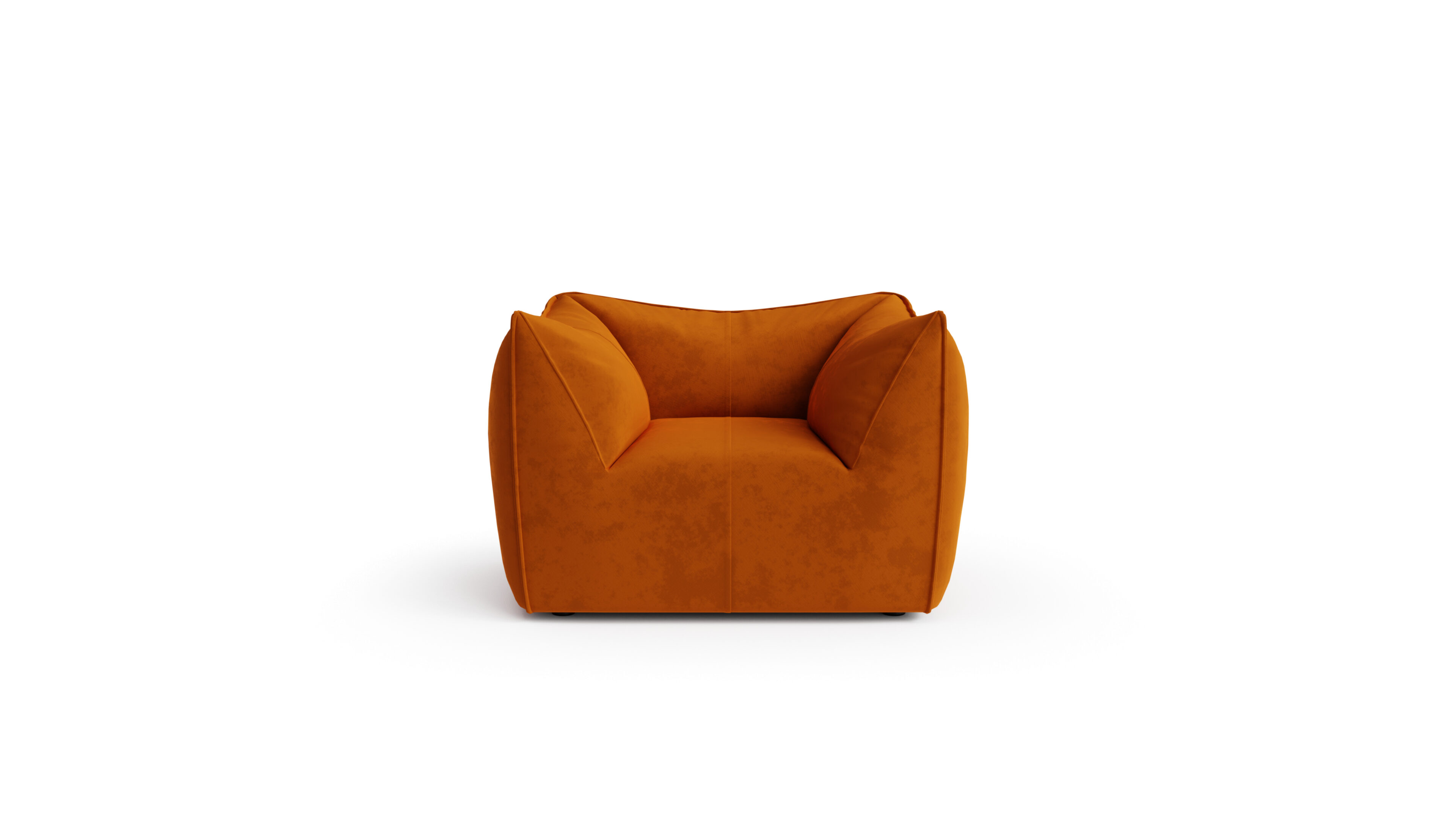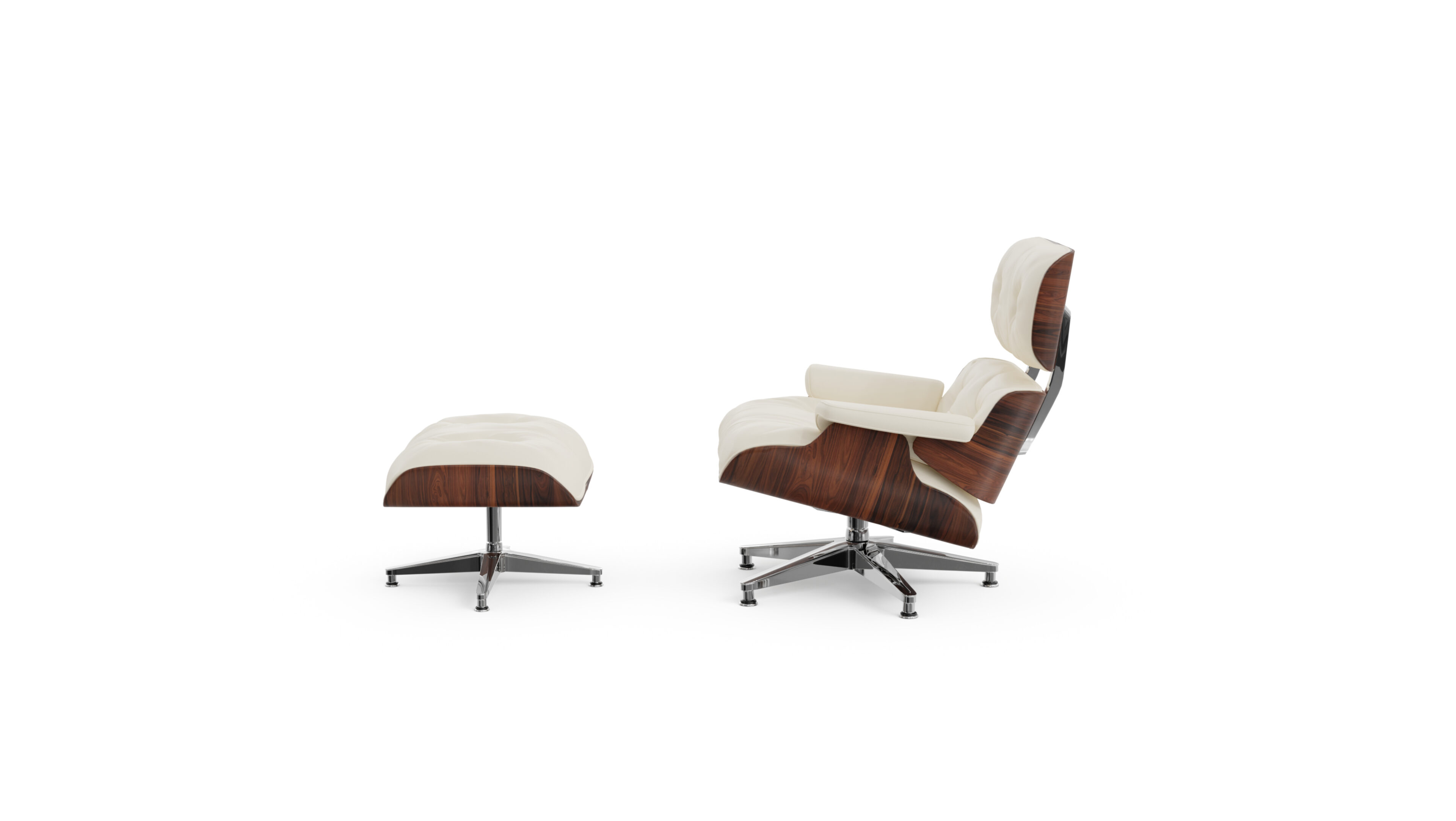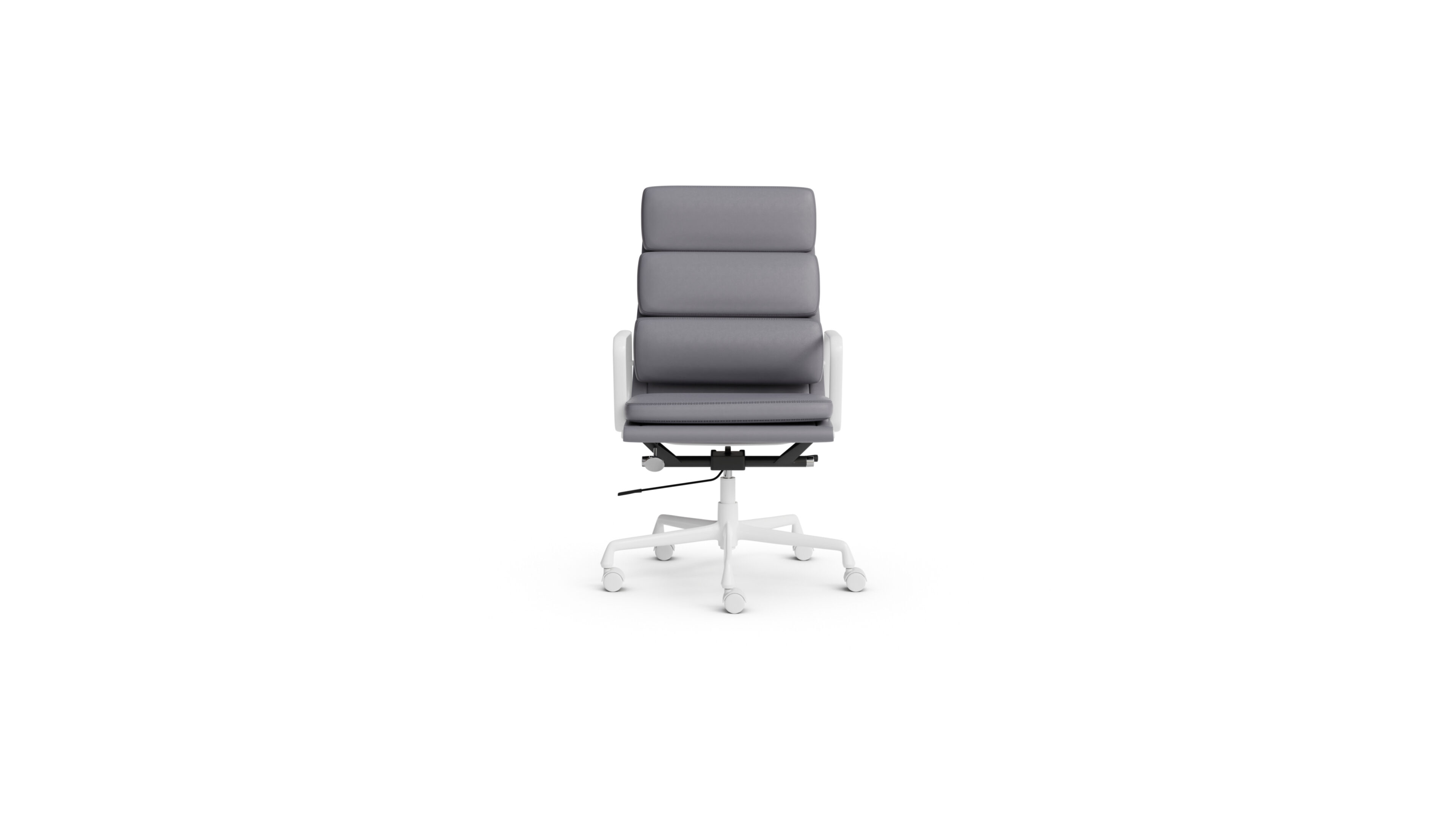
Mario Bellini Biography
Mario Bellini (b. 1935) is an Italian architect and designer known for his innovation in furniture and industrial design. He began his career after graduating from the Politecnico di Milano in 1959. Bellini is known for his Cab Chair series (1977), which features a unique leather “skin” zipped over a steel skeleton, merging structure and upholstery. His Le Bambole sofa series (1972) pioneered the use of polyurethane foam molding, creating soft, inviting forms that challenged traditional furniture construction. Bellini’s architectural work includes the Tokyo Design Center and the renovation of the Milan Convention Center. His designs are characterized by organic forms and innovation, significantly influencing modern furniture and industrial design.
Early Life and Education
Born in 1935 in Milan, Italy, Mario Bellini grew up in a period of significant cultural and economic transformation in post-war Italy. This context likely influenced his later innovative approach to design. Bellini pursued his education at the Politecnico di Milano, one of Italy’s most prestigious technical universities, graduating with a degree in architecture in 1959. This education provided him with a strong foundation in both technical and aesthetic aspects of design, which would prove crucial in his multifaceted career.
Career and Achievements
Bellini’s career, spanning over six decades, has been marked by significant contributions to furniture design, industrial design, and architecture. After graduating, he quickly established himself as an innovative force in Italian design, collaborating with numerous renowned companies and leaving his mark across various design disciplines.
In furniture design, Bellini’s work for B&B Italia stands out as particularly influential. The Le Bambole sofa series, introduced in 1972, revolutionized furniture design with its use of polyurethane foam molding. This technique allowed for the creation of soft, inviting forms that seemed to grow organically from the floor, challenging traditional notions of furniture construction.
Another landmark in Bellini’s career is the Cab Chair series, designed for Cassina in 1977. This innovative design features a leather “skin” zipped over a steel skeleton, effectively merging structure and upholstery into a seamless whole. The Cab Chair remains an icon of modern furniture design and continues to be produced today.
Bellini’s work in industrial design has been equally influential. He served as chief design consultant for Olivetti from 1963 to 1991, overseeing the design of numerous typewriters, calculators, and early computer terminals. His designs for Olivetti, such as the Divisumma 18 calculator (1973), are considered classics of 20th-century industrial design.
In architecture, Bellini has completed projects around the world. Notable works include the Tokyo Design Center (1988-1992) and the renovation and expansion of the Milan Convention Center (2008-2012), which showcases his ability to work at an urban scale.
Signature Designs
Mario Bellini’s portfolio spans furniture, product design, and architecture. Some of his most notable works include:
1. Le Bambole Sofa Series (1972): A revolutionary sofa design using polyurethane foam molding to create soft, organic forms.
2. Cab Chair Series (1977): An iconic chair design featuring a removable leather “skin” zipped over a steel frame.
3. Divisumma 18 Calculator for Olivetti (1973): A classic of industrial design that balanced functionality with aesthetic appeal.
4. Tokyo Design Center (1988-1992): An architectural project that showcases Bellini’s ability to work at an urban scale.
5. Renovated Milan Convention Center (2008-2012): A major architectural project that revitalized a key part of Milan’s urban fabric.
Design Philosophy and Approach
Bellini’s design philosophy is characterized by a deep interest in the relationship between form, function, and technology. He believes in pushing the boundaries of what’s possible with materials and manufacturing techniques, often resulting in designs that are both innovative and timeless.
His approach often involves a thorough exploration of materials and their properties. This is evident in designs like the Cab Chair, where the properties of leather are integral to the chair’s form and function, or in Le Bambole, where the possibilities of polyurethane foam are fully exploited to create new forms in seating.
Bellini’s work is also marked by a strong sense of organic form. Many of his designs feature soft, rounded shapes that seem to invite touch and use. This approach creates a sense of warmth and approachability in his designs, even when working with industrial materials.
In his architectural work, Bellini applies similar principles on a larger scale. He seeks to create buildings that are not just functional, but that also engage with their surroundings and enhance the urban fabric. His renovations often respect the existing structure while introducing contemporary elements, creating a dialogue between past and present.
Legacy and Influence
Mario Bellini’s influence on modern design is profound and far-reaching. In furniture design, his innovative use of materials and manufacturing techniques has opened up new possibilities for form and function. Designs like the Cab Chair and Le Bambole sofa continue to be produced and admired today, testament to their enduring appeal.
In the field of industrial design, Bellini’s work for companies like Olivetti helped establish Italy as a leader in this area. His ability to combine technological sophistication with elegant, user-friendly design set a benchmark that continues to influence product designers today.
Bellini’s architectural work, while perhaps less well-known than his furniture and product design, has nonetheless made significant contributions to urban landscapes around the world. His approach to renovation and urban design, which respects existing structures while introducing contemporary elements, offers valuable lessons for architects working in historic urban contexts.
Throughout his career, Bellini has received numerous awards and accolades, including eight Compasso d’Oro awards and a Golden Medal for his contribution to design (Medaglia d’oro alla carriera) from the Milan Triennale. His work is included in the permanent collections of many major museums, including the Museum of Modern Art in New York and the Victoria and Albert Museum in London.
As Bellini continues to work and innovate, his influence on the world of design remains strong. His career serves as an inspiration to designers across disciplines, demonstrating the value of curiosity, innovation, and a willingness to challenge established norms.
Mario Bellini FAQs
What is Mario Bellini best known for?
Mario Bellini is best known for his innovative furniture designs, particularly the Cab Chair series (1977) and Le Bambole sofa series (1972). He’s also renowned for his industrial design work for Olivetti and his architectural projects.
What is unique about the Cab Chair?
The Cab Chair, designed in 1977, features a unique leather “skin” that zips over a steel skeleton, merging structure and upholstery in an innovative way.
How did Bellini innovate with Le Bambole sofa series?
Le Bambole sofa series, introduced in 1972, pioneered the use of polyurethane foam molding in furniture design. This technique allowed for the creation of soft, organic forms that challenged traditional furniture construction.
What are some of Bellini’s notable architectural works?
Bellini’s notable architectural works include the Tokyo Design Center (1988-1992) and the renovation of the Milan Convention Center (2008-2012). These projects showcase his ability to work at an urban scale and integrate modern design with existing structures.











































